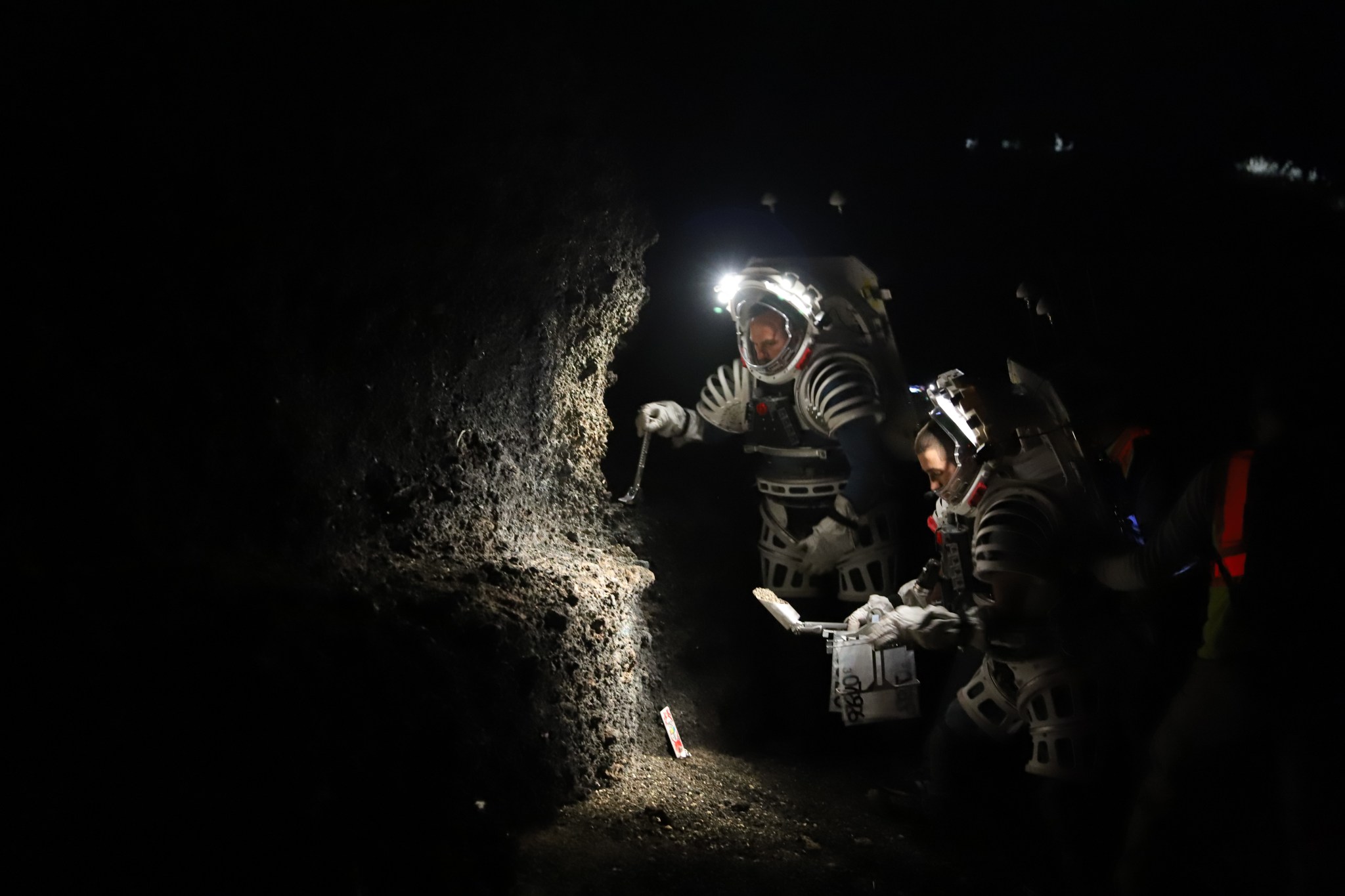As part of the Artemis missions, astronauts will visit the lunar South Pole region, which has never been explored by humans. To prepare for the first lunar polar expedition, which will take place during the Artemis III mission, NASA will practice operations in a simulated lunar environment.
The remote, rocky, high-desert terrain of the S P Crater near Flagstaff, Arizona will serve as lunar proxy for a mission simulation called Joint Extravehicular Activity Test Team Field Test #3 (JETT3) scheduled for Oct. 4-9. The JETT3 team will leverage the location’s unique terrain and geology, and minimal communications infrastructure to conduct simulated moonwalks.
“When Americans take those next steps on the Moon, it will be made possible through integrated tests and missions like JETT3,” says David Coan, field test director for JETT3. “We will put all of our systems and planning to the test. This collaboration between the engineering and science communities combines newly engineered spaceflight hardware with techniques for exploring natural planetary environments and embodies the importance of partnerships in our return to the Moon.”
The JETT3 team consists of NASA scientists and engineers, other members of the science community, flight controllers, astronauts, and field experts who will come together to execute the simulated missions and discuss and record lessons learned. A flight control team and a team of scientists will lead the moonwalks from the Mission Control Center at NASA’s Johnson Space Center in Houston. Two astronauts will join field experts to conduct the moonwalks that consist of traversing an approximate one-mile circle while wearing mockup spacesuit systems and performing various sample collection techniques.
With nearly all of the Apollo samples having been opened, a goal of the Artemis III mission will be collecting new samples for analysis and study back on Earth. After astronauts land on the lunar surface, scientists will have already selected areas of interest for the astronauts to obtain the samples. The JETT3 analog mission will follow this process as well – during each of the four moonwalks, astronauts will pause at a variety of pre-selected areas to collect the samples. Once in the area, they will communicate with the science team about which specific rocks and soil to sample. Part of this process includes data collection and real-time analysis of the soil. Teams will use the same communication processes and lessons learned during JETT3 when developing their mission plans for Artemis III.
To lead the spacewalks from mission control, flight controllers will direct the astronauts and guide them on their walks. Once the teams have identified a sample to collect, astronauts will communicate with the flight control team in detail as they use a variety of tools to collect the sample. These tools will allow them to hammer, core, rake and scoop samples into collection instruments. Data about the accuracy and usefulness of these prototype tool designs will be communicated real-time and collected for later analysis by NASA experts.
Positioned from the control rooms at Johnson, the science team and flight control team will support the astronauts on JETT3 as they conduct their simulated Artemis moonwalks. The team’s findings and discussions will help NASA apply lessons learned to develop technologies and plan operations for Artemis missions. The samples collected on Artemis III will provide meaningful insight into the Moon’s resources, reveal new discoveries about our solar system, and help inform plans for developing a sustainable presence on the Moon.
Notable team members in the field:
-
Drew Feustel, NASA Astronaut
-
Zena Cardman, NASA Astronaut
-
David Coan, JETT3 field fest director
-
Trevor Graff, Artemis science hardware and testing lead
-
Zach Tejral, JETT3 integrated hardware lead
-
Tess Caswell, JETT3 Flight Operations Directorate extravehicular activty (EVA) lead
Notable team members in the Mission Control Center:
-
Kathleen “Kate” Rubins, NASA Astronaut
-
Kelsey Young, JETT3 science lead and Houston test director
-
Jackie Kagey, JETT3 flight control team
-
Ike Theriot, JETT3 flight control team
Learn more about how NASA’s analog missions are innovating for the benefit of humanity at:



























